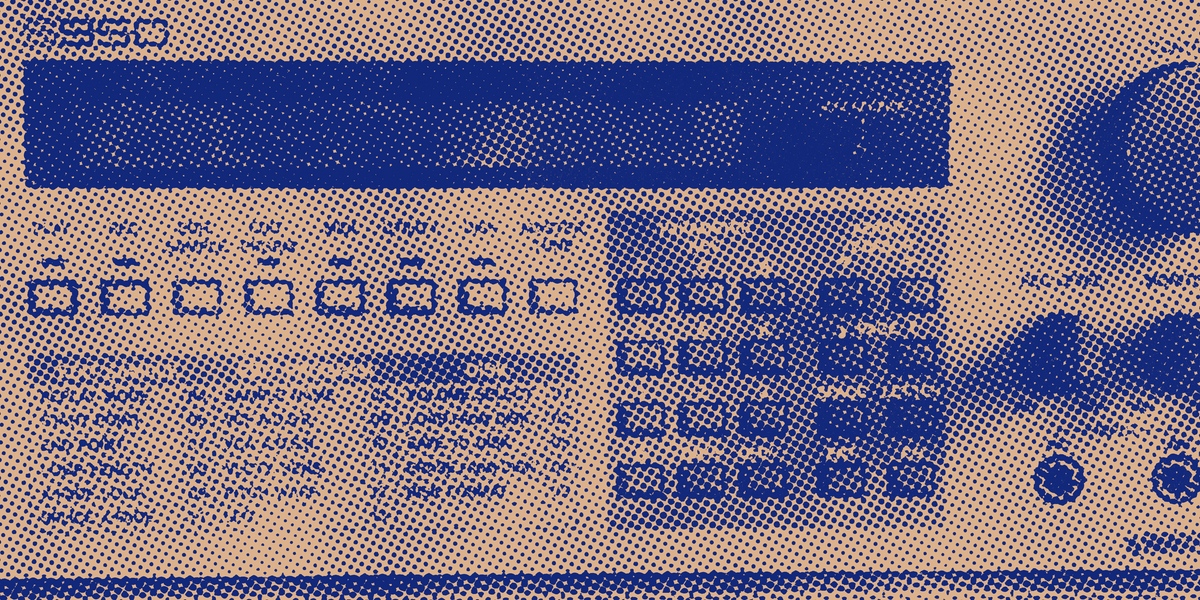The crunchy long life of Akai S950
It was heavy and slow and had a tiny screen and annoying knobs but it was amazing and here's its story. The S2000 in all its maddening glory.

The Akai S950, released in 1988, is a landmark piece of music technology that made a substantial impact on the landscape of music production. Pioneering in its design, the S950 set new standards for sound quality, functionality, and user interface in the world of samplers, allowing musicians to manipulate and reproduce sounds in ways that were previously impossible. It's no stretch to say that the sampler era was revolutionary for music culture the world over, and the Akai range was front and center.
History
The Akai S950 was born during a time of rapid innovation in electronic music technology. At the start of the eighties, E-mu had released the Emulator in 1981, and its follow-up E-mu SP12 and E-mu SP12000 samplers had set a high bar. While Akai's S900 offering played catchup aside from its MPC range, the S950 took this further with significant enhancements in terms of sound quality, memory capacity, and overall functionality. While perhaps not iconic yet, the Akai company was still renowned for its contributions to electronic music equipment and all new releases felt revolutionary at the time.
Features
The S950 was a 12-bit sampler, with a sampling rate that ranged from 7.5kHz to 40kHz and 750kB of memory, extendable up to 2.25MB. One of its hallmark features was the ability to variably sample, which allowed musicians to create more complex, dynamic sounds by altering the pitch and length of the samples.
The S950 also introduced a time-stretching feature, a groundbreaking innovation that enabled musicians to change the length of a sample without affecting its pitch. This, combined with a powerful filter section and a user-friendly interface, gave musicians an unprecedented level of control over their sounds.
Impact on Music
The Akai S950's capabilities, particularly in time-stretching and pitch-shifting, played a significant role in the evolution of several music genres. It was widely adopted in hip-hop, electronic, and dance music, giving artists the ability to manipulate and layer sounds in new and exciting ways. The affordability was also a factor, given the vastly cheaper price compared to the likes of the Fairlight CMI.
Notably, the sampler was a favorite tool of many pioneering music producers. For instance, the British electronic music duo The Future Sound of London used the S950 extensively, producing iconic tracks such as "Papua New Guinea". Similarly, in the realm of hip-hop, the likes of Pete Rock and DJ Premier extensively used the S950 to craft their distinctive sounds.
Continuing Influence
In recent years, the influence of the Akai S950 has not only persisted but has been revitalized through digital emulation and the enduring desire of musicians to capture its characteristic sound. Several modern plugins have sought to replicate the S950's sonic qualities, bringing its unique flavor into the digital music production environment.
One notable example is the RX950 plugin, which claims to offer a near-perfect emulation of the S950. This plugin has garnered positive reviews from users, many of whom believe that it successfully captures the essential sound of the original sampler, albeit with some limitations. Users have noted the plugin's ability to replicate the S950's slight compression and unique bandwidth characteristics, contributing to a sound that is slightly duller in the highs and with a potential slight low to low-mid bump. Some users, however, have noted that the plugin lacks the higher frequency characteristic of the S950, indicating the enduring allure of the original sampler's sound.
Moreover, the sound of the S950 continues to find a place in contemporary music, as evidenced by its use in the work of modern artists. For example, the likes of Fatboy Slim, Moby, Depeche Mode, and Dr. Dre have made the S950's sound a significant part of their music. In recent years, it's hard to imagine sample-based genres like Jungle and Triphop without this grey box of sonic fun. If the Akai S2000 became the workhose of affordable and ubiquitous samplers, it's the unique sound and nostalgia for the S950's that serves as a testament to its enduring influence and its continued relevance in the culture of music production.
It's clear that the Akai S950, through both its original hardware form and in its digital emulations, continues to exert a significant influence on the landscape of music production. As musicians continue to seek out its distinctive sound and feel, the S950's legacy is likely to endure, continuing to shape the sound of music for years to come.
Into the future
The Akai S950 is much more than a piece of music technology; it's a cultural artifact that stands as a testament to the power of innovation and creativity in shaping the soundscape of music. Its groundbreaking features and unique sound character have not only withstood the test of time but have continued to influence the realm of music production, decades after its initial release.
While modern technology has brought about a plethora of new tools and possibilities for music creation, the S950's distinctive sound and intuitive interface continue to hold a unique charm. This charm is not lost on the modern producers who either seek out the original hardware or use digital emulations to infuse their work with the S950's signature sound. The ongoing use of the S950, as well as the creation of plugins designed to emulate its characteristics, attests to its enduring impact on music production culture.
Moreover, the S950's influence extends beyond the confines of the recording studio. It has left an indelible mark on the evolution of multiple music genres, from hip-hop and electronic to dance music. It has empowered artists with the tools to push the boundaries of sound, enabling the creation of music that continues to resonate with audiences worldwide.
In a broader sense, the enduring legacy of the Akai S950 exemplifies the profound ways in which technology can shape artistic expression. As a tool, the S950 opened new avenues for creativity, enabling musicians to manipulate and reproduce sounds in ways that were previously impossible. As a cultural icon, it continues to inspire, its influence echoing in the music of both established and emerging artists.
As we look forward to the future of music technology, the Akai S950 serves as a reminder of the power of innovation and the enduring impact that a well-designed tool can have on the art of music. Its legacy offers a valuable lens through which we can understand the past, engage with the present, and anticipate the future of music production. It is more than a sampler; it holds a significant place in the history of music sampler and samplers, and it is a key chapter in the ongoing story of music technology, a story that continues to be written with every note, beat, and melody.


